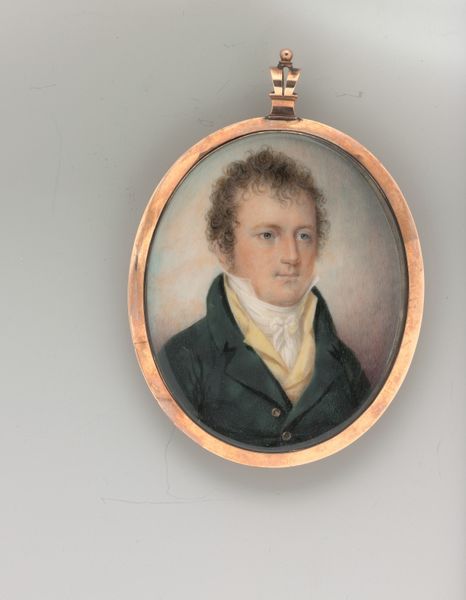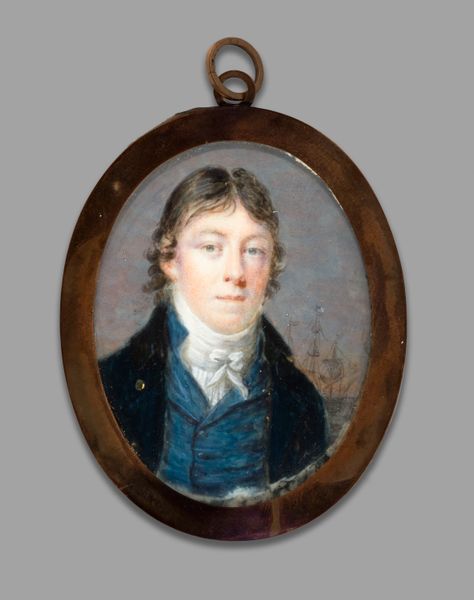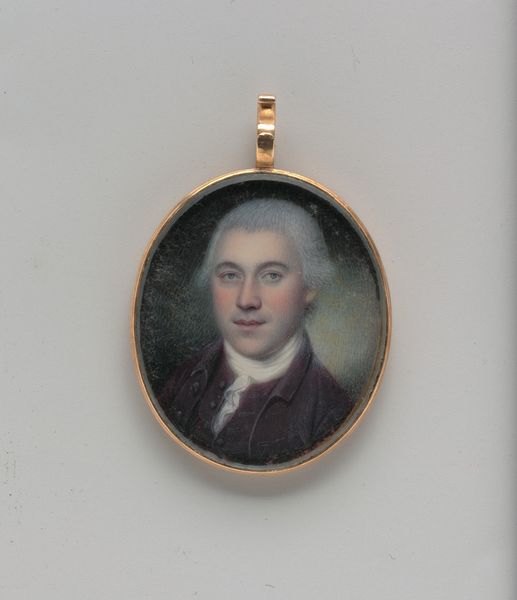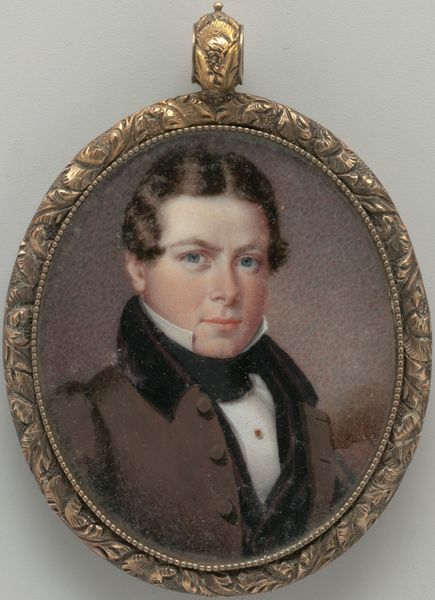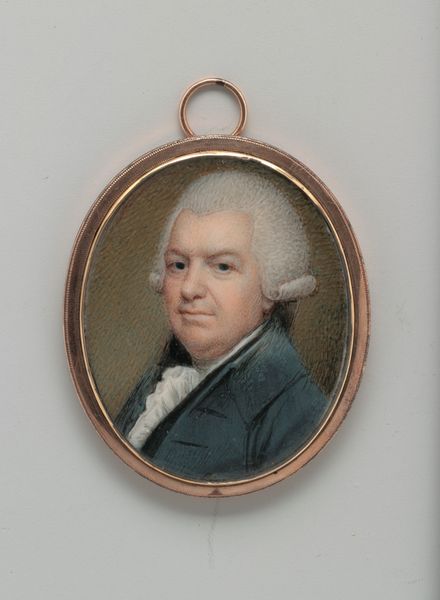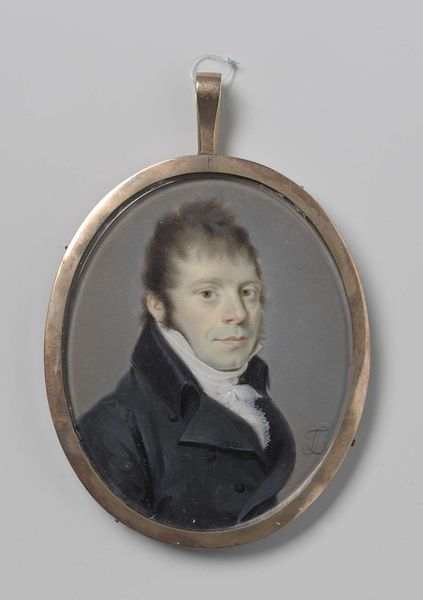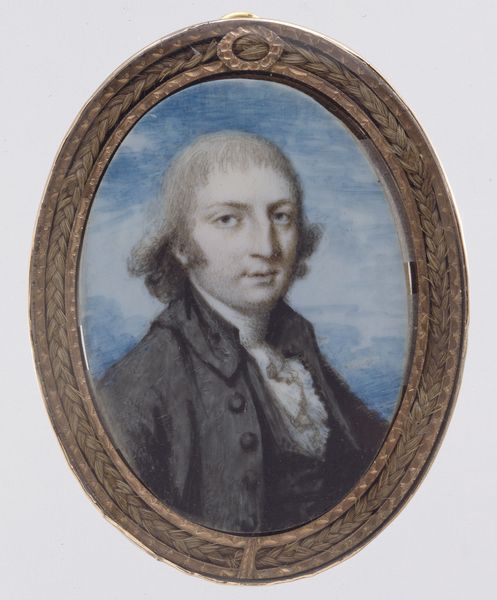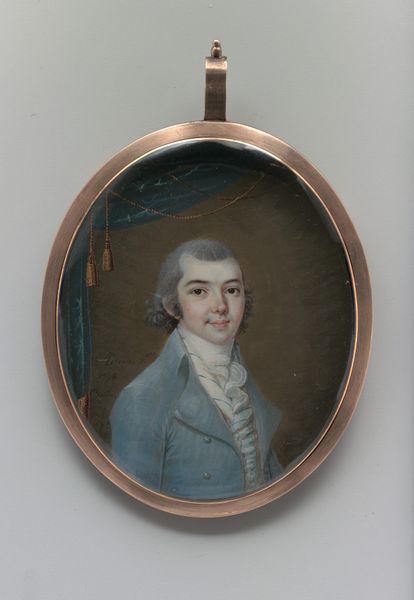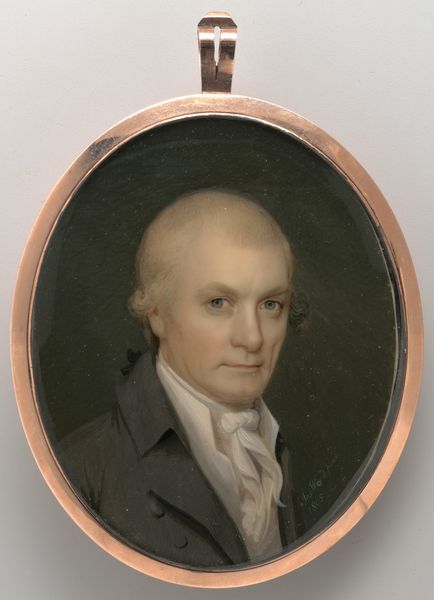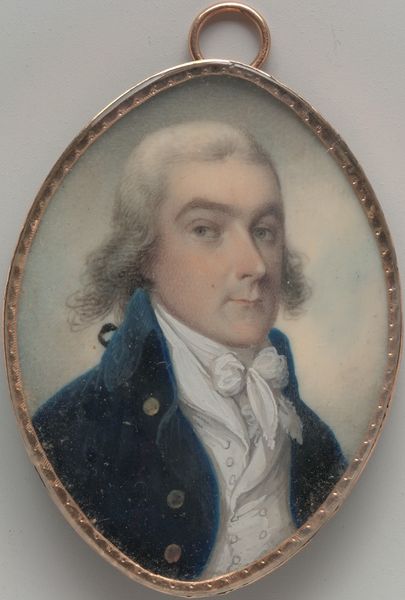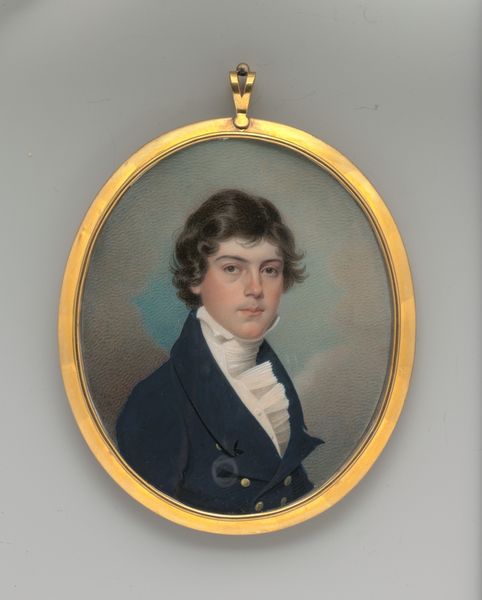
painting, watercolor
#
portrait
#
painting
#
oil painting
#
watercolor
#
romanticism
#
watercolor
Dimensions: 1 3/4 x 1 1/4 in. (4.4 x 3.2 cm)
Copyright: Public Domain
Curator: We're looking at James Peale’s "Self-portrait," completed in 1789 and currently held at the Metropolitan Museum of Art. It’s executed with oil and watercolor. Editor: My first impression is how intimate and delicate it feels, almost like a personal keepsake or some sort of adornment given its size. Curator: Precisely. Its miniature format is part of its appeal. Notice how Peale employs a subtle chiaroscuro, primarily focusing on light and shadow to model his face. Editor: What intrigues me is thinking about the material conditions behind this object, though. As a self-portrait, was this produced primarily as an advertisement of his skills in the workshop, or even traded as payment? I wonder who would commission a miniature like this, and if its creation differed greatly from, say, larger-scale family portraits. Curator: These are worthwhile ponderings, but consider the composition itself. The oval frame acts as a contained window onto Peale. The soft coloration and limited palette serve to isolate and enhance his facial features. We can perceive the ideals of romanticism through the sensitive and refined emotional representation that comes through this delicate structure. Editor: Sure, there is this sense of elevated emotional expression and individualism… and even the materials themselves must have contributed to the artistic interpretation, like watercolor—this was such an accessible, less fussy way of working compared to the techniques used with oil! It lends itself to mass consumption too; how interesting is it to imagine people trading and consuming themselves this way? Curator: You raise some fascinating points regarding material accessibility, although this work might offer a counter-narrative; its fine detail also echoes the traditional, controlled techniques so commonly taught at that period. Its surface treatment conveys not only emotion but also meticulous craftsmanship. Editor: Ultimately, the artistic interpretation feels highly influenced by what's involved with its manufacturing, dissemination and commercial use. Curator: A vital layer to the work and the meaning imbued in it—by unpacking process alongside form, perhaps we get closer to a more accurate portrait of James Peale himself.
Comments
No comments
Be the first to comment and join the conversation on the ultimate creative platform.

